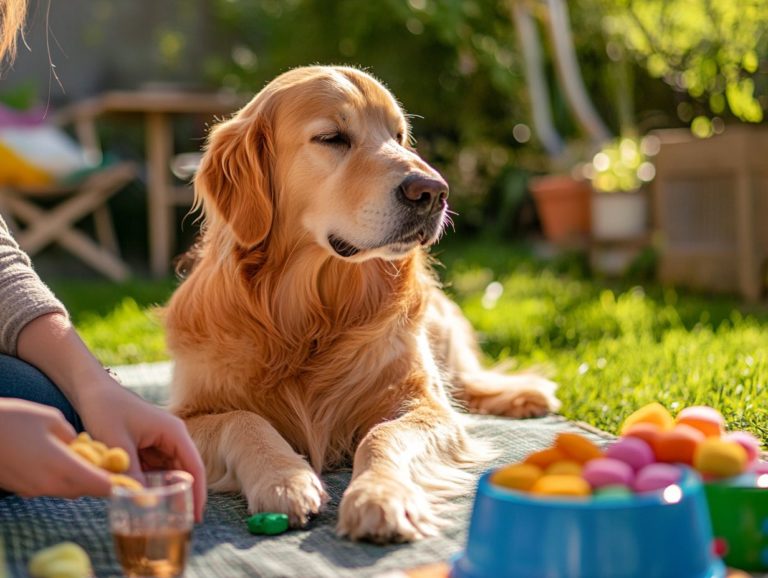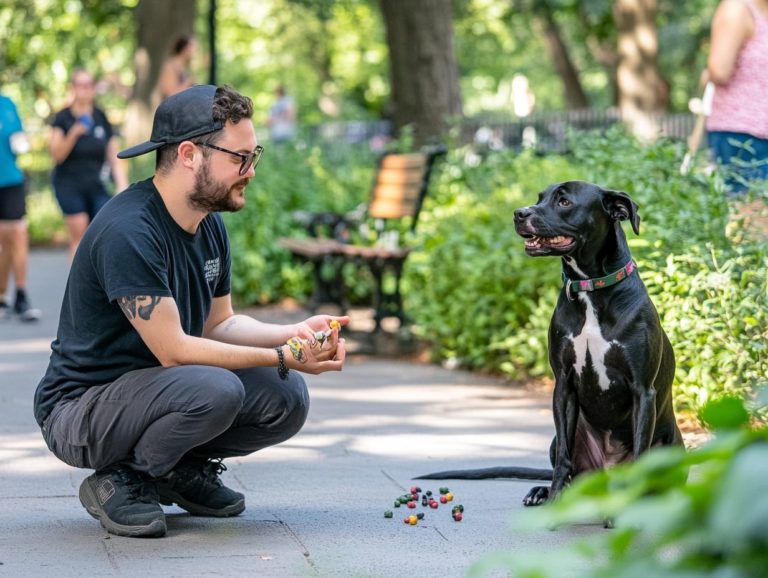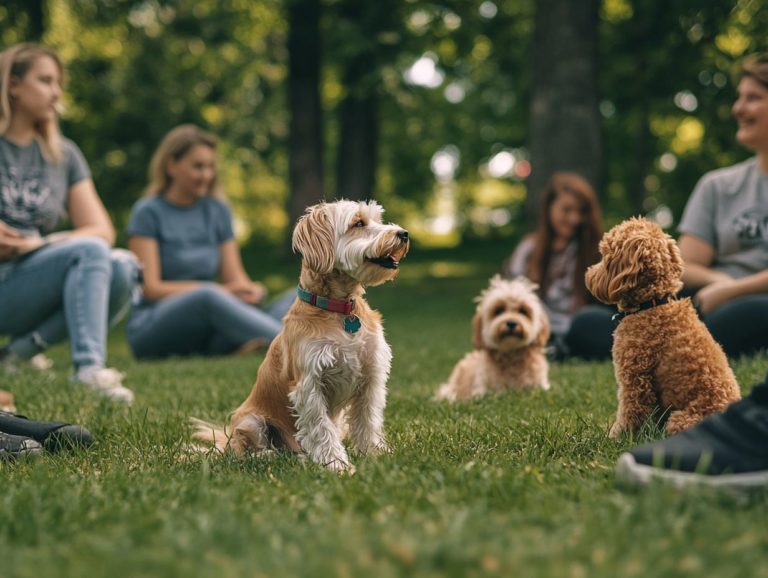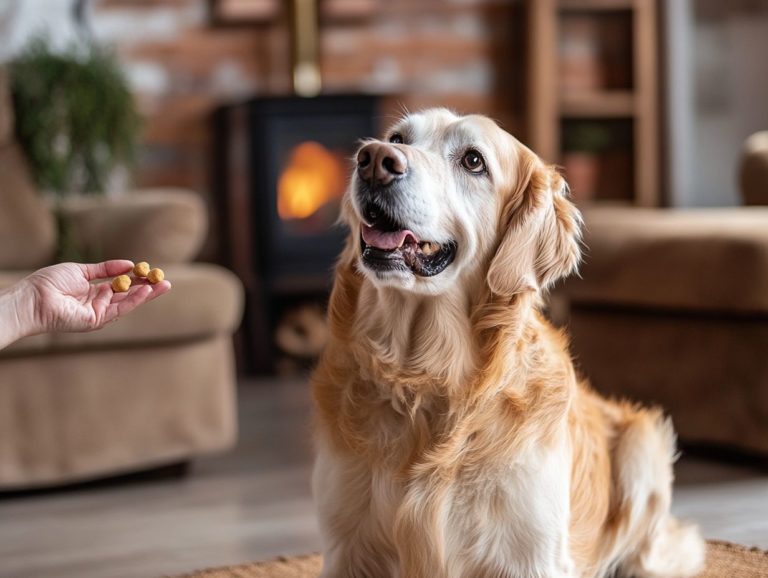How to Train Your Pet for a Calmer Home
Is your pet struggling with anxiety or aggression? You’re not alone! Navigating the world of pet behavior can indeed be a challenge, especially when anxiety and aggression disrupt the harmony of your home.
Understanding the common triggers behind these issues is vital, as is knowing how to train your furry companion effectively. This article delves into essential techniques, from positive reinforcement to creating a calming environment that soothes both you and your pet.
You will discover how to identify and manage aggressive behavior, teach relaxation methods, and recognize when it s time to seek professional help. Join this journey to cultivate a more peaceful and joyful home for both you and your beloved pet.
Contents
- Key Takeaways:
- Understanding Pet Behavior
- Effective Training Techniques
- Creating a Calm Environment for Your Pet
- Managing and Reducing Aggressive Behavior
- Teaching Relaxation Techniques
- Seeking Professional Help
- Frequently Asked Questions
- What are some benefits of training my pet for a calmer home?
- How do I establish a calm and positive environment for my pet?
- What are some effective methods for training a pet for a calmer home?
- What if my pet is already displaying disruptive behavior?
- How long does it take to train a pet for a calmer home?
- What should I do if I am having trouble training my pet for a calmer home?
Key Takeaways:
Here are some key strategies to remember:
- Consistency and positive reinforcement are key to effective pet training.
- Understanding and eliminating triggers can help create a calmer environment for your pet.
- Seeking professional help can be beneficial in managing and reducing aggressive behavior.

Understanding Pet Behavior
Understanding pet behavior is essential for you as a dog owner, enabling you to tackle issues like separation anxiety (when dogs feel scared or stressed when left alone), aggression, and other behavior problems with confidence. By identifying the underlying causes of these behaviors, you can employ effective strategies that enhance your dog s quality of life and overall well-being.
Strengthening the bond between you and your pet creates a healthier environment for both of you. Renowned professional dog trainers, such as Toni Woods, highlight the critical role of socialization, exercise, and mental stimulation in nurturing positive dog behavior.
Common Triggers for Anxiety and Aggression
Common triggers for anxiety and aggression in dogs can vary widely, influenced by environmental factors and specific behavioral cues that demand your immediate attention. Understanding these triggers is vital for effective anxiety management and changing behavior, as they can profoundly affect your dog’s mental state.
Issues like separation anxiety, insufficient socialization, and excess energy often lead to aggressive behaviors. Recognizing these triggers helps you manage anxiety effectively, making it essential for you to implement appropriate training strategies early on.
You might notice your dog becoming restless or reactive in crowded spaces, a situation that can worsen when they’re separated from you. Using calming exercises can significantly reduce their stress.
When dogs aren t adequately stimulated, their pent-up energy can bubble over into unwanted behaviors. By identifying these triggers promptly, you can eliminate the motivations behind their anxiety or aggression. This proactive approach allows you to apply positive reinforcement techniques and establish structured routines that foster a more balanced and content demeanor in your furry companion.
Effective Training Techniques
Effective dog training techniques are crucial for cultivating good behavior and strengthening the bond between you and your pet. By employing methods such as positive reinforcement and consistent training strategies, you can effectively address behavior problems while creating a fulfilling experience for both you and your canine companion.
Techniques like clicker training and treat reinforcement not only promote obedience but also foster trust, transforming training sessions into enjoyable moments. Renowned trainers like Toni Woods emphasize the importance of structured training plans specifically tailored to the unique needs of each dog, ensuring a personalized approach to their development.
Positive Reinforcement and Consistency
Positive reinforcement and consistency are the foundations of effective dog training strategies. By rewarding your dog s desired behaviors with treats or verbal praise, you encourage them to repeat those actions. It s crucial to deliver commands with the right volume and clarity while maintaining a structured training environment. Consistency in your training sessions reinforces learning and lays a strong foundation for obedience and good behavior.
This approach not only fosters a positive learning atmosphere but also strengthens the bond between you and your dog. Techniques like clicker training can be exceptionally effective. They allow you to mark desired actions with a distinct sound before rewarding your dog with a treat. Using commands such as ‘sit,’ ‘stay,’ and ‘come’ in short, focused sessions helps reinforce their understanding while minimizing confusion.
Setting specific times for training whether it s a few minutes each day or several longer sessions each week solidifies their learning. These structured methods highlight the importance of maintaining a consistent schedule, helping your dog understand expectations and boosting their confidence in their abilities.
Creating a Calm Environment for Your Pet
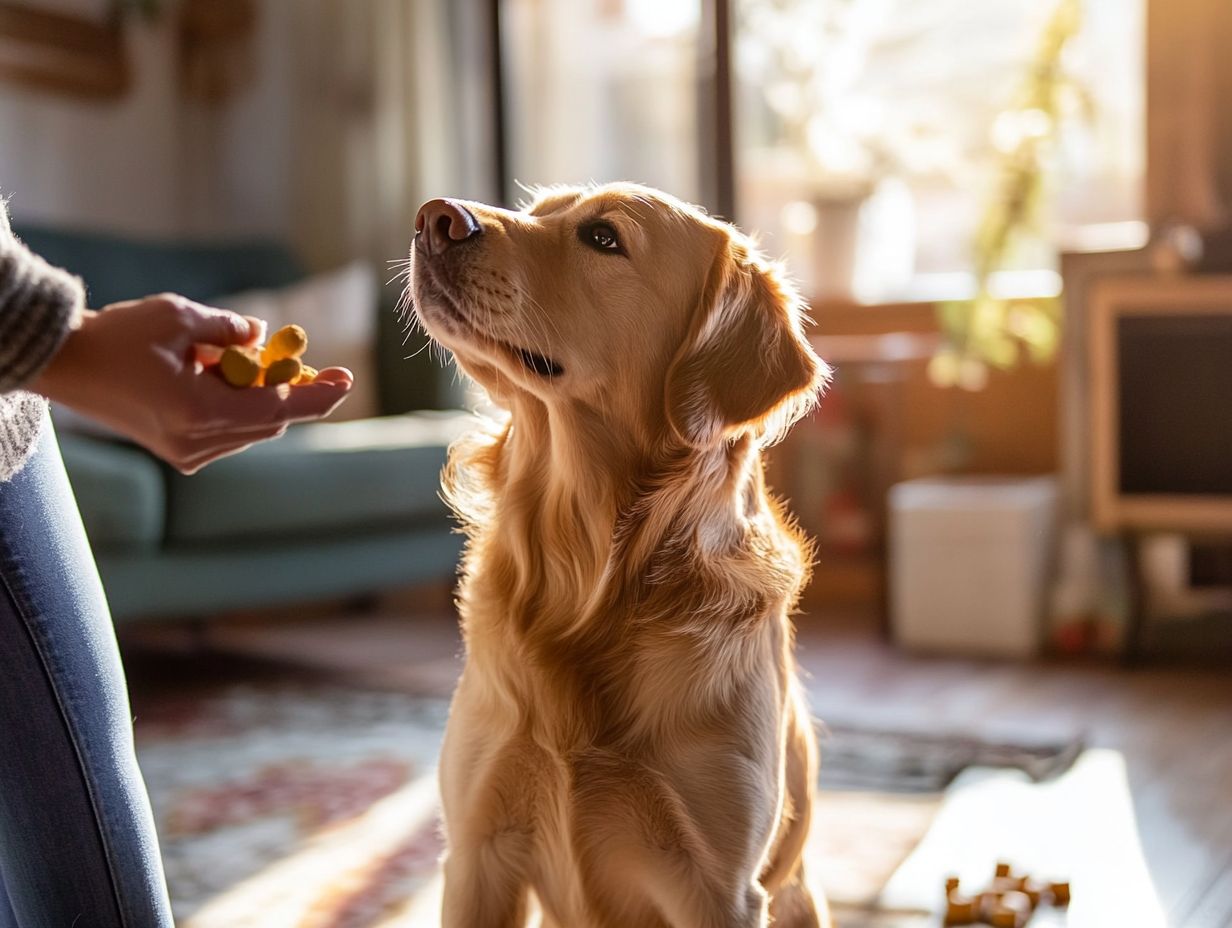
Creating a serene environment for your pet is crucial for managing their anxiety and fostering overall well-being. You can use calming exercises, crate training (which means teaching your dog to feel comfortable in a crate), and enriching toys to significantly lower their stress levels. Additionally, consider exploring techniques for training anxious senior pets to establish a safe haven where they can thrive.
You can also use calming pheromones and play classical music to elevate the tranquility of their surroundings, making it easier for your dog to unwind and feel at ease.
Eliminating Stressors and Providing Comfort
Eliminating stressors and providing comfort are essential elements of effective anxiety management for your pets. Crafting a healthy environment free from triggers that induce stress helps your dog feel secure. Engaging in structured playtime stimulates both mind and body while providing the comfort dogs crave. Recognizing and addressing common stressors helps cultivate a happier and more relaxed pet.
Understanding the specific triggers that spark anxiety in your pet is the first step toward creating a calming environment. Simple adjustments, like minimizing loud noises, avoiding sudden movements, or establishing a consistent routine, can significantly reduce stress levels and help implement training techniques to manage aggression in anxious pets.
Introducing calming techniques such as soothing music or aromatherapy can enhance your dog’s sense of security. Engaging in structured playtime, like agility exercises or interactive games, boosts your dog’s cognitive skills and deepens the bond between you and your furry friend.
By combining these strategies, you ensure both mental stimulation and emotional reassurance, leading to a well-adjusted and content companion.
Managing and Reducing Aggressive Behavior
Managing and reducing aggressive behavior in dogs requires a nuanced understanding of the underlying causes alongside effective training strategies. It’s crucial to identify the triggers that spark aggression, as this insight is key to successfully implementing behavior modification techniques.
By engaging in consistent socialization and structured training sessions, you can significantly influence your dog’s behavior, minimizing aggressive incidents and nurturing a more harmonious bond between you and your canine companion.
Start implementing these techniques today for a happier, calmer dog!
Identifying Triggers and Implementing Solutions
Identifying triggers for aggressive behavior is the first step toward effective training. Observe your dog s reactions in different situations to uncover fears or stressors that cause aggression.
Understanding these triggers addresses immediate concerns and provides insights for long-term behavioral modifications. Clearly identifying what causes anxiety allows you to use distraction techniques like toys or treats during tense moments.
Working with a professional behaviorist can enhance your training. Their expertise gives valuable feedback and tailored plans for your dog.
Teaching Relaxation Techniques
Teaching relaxation techniques can greatly improve your dog s ability to manage anxiety and stress. Incorporating calming exercises into training helps your dog learn to relax.
Using positive reinforcement encourages your dog to embrace relaxation and fosters a deep sense of security and well-being.
Methods for Calming Your Pet
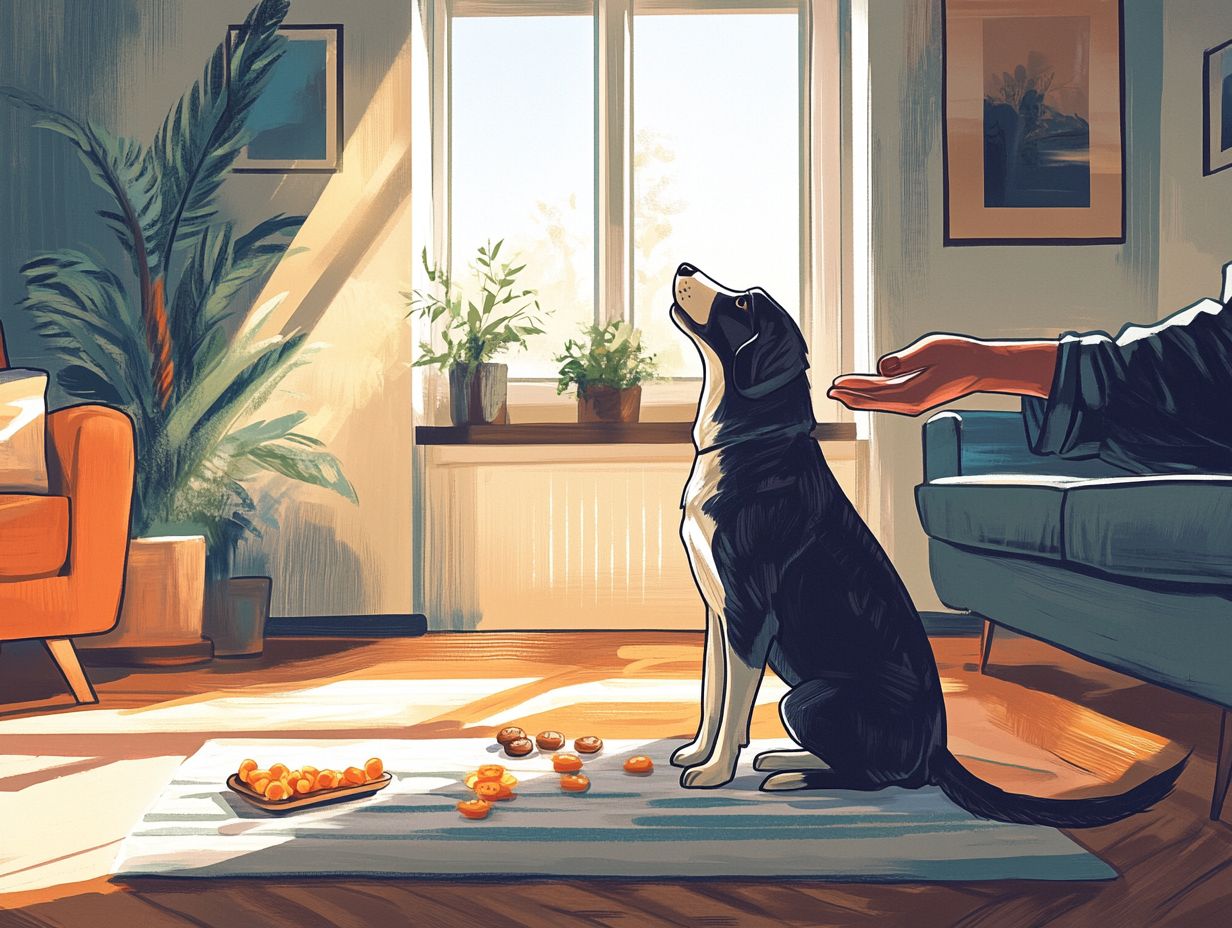
You have several effective methods for calming your pet that can help manage anxiety. Additionally, using music to calm anxious pets during training, along with calming pheromones and crate training, creates a secure environment to reduce stress.
Rewarding your pet with treats during these sessions reinforces positive behavior, leading to a more relaxed state. Consistent application of these techniques promotes tranquility and strengthens the bond of trust between you and your pet.
Calming pheromones mimic natural scents that can soothe anxious behaviors. Incorporating treat rewards can enhance the learning process and encourage calmer behaviors.
Seeking Professional Help
Seeking professional help from a dog trainer or behaviorist can be crucial for addressing complex behavioral issues. With their knowledge of dog behavior, they provide personalized solutions for anxiety training and behavior modification.
Their insights are invaluable as you tackle challenges like aggression and separation anxiety, ensuring a happier and healthier bond with your furry companion.
When to Consult a Trainer or Behaviorist
When faced with persistent aggressive behavior or severe anxiety in your pet, consulting a trainer or behaviorist becomes essential. Recognizing the signs that indicate you need professional guidance can prevent further escalation of these behavioral issues.
Frequent growling, biting, or an inability to settle during stressful situations are clear red flags. If you notice your pet is excessively fearful in new environments or around unfamiliar people, especially energetic dogs, it may be time to seek specialized assistance.
Professional trainers can create a tailored plan that addresses specific issues. They incorporate rewarding good behavior and consistent routines, such as training sessions and guided sessions. Their knowledgeable insights can help you develop coping mechanisms to enable your pet to feel more secure, ultimately reducing anxiety.
With structured guidance, you can cultivate a stronger bond and ensure a safer environment for both your pet and those around them. This promotes pet welfare and enhances their overall well-being.
Frequently Asked Questions
What are some benefits of training my pet for a calmer home?
Training your pet for a calmer home creates a peaceful living environment for you and your family and reduces stress and anxiety for your pet. Learning how to train your pet to handle loud noises can improve their obedience and overall behavior, making obedience training essential for a harmonious household.
How do I establish a calm and positive environment for my pet?
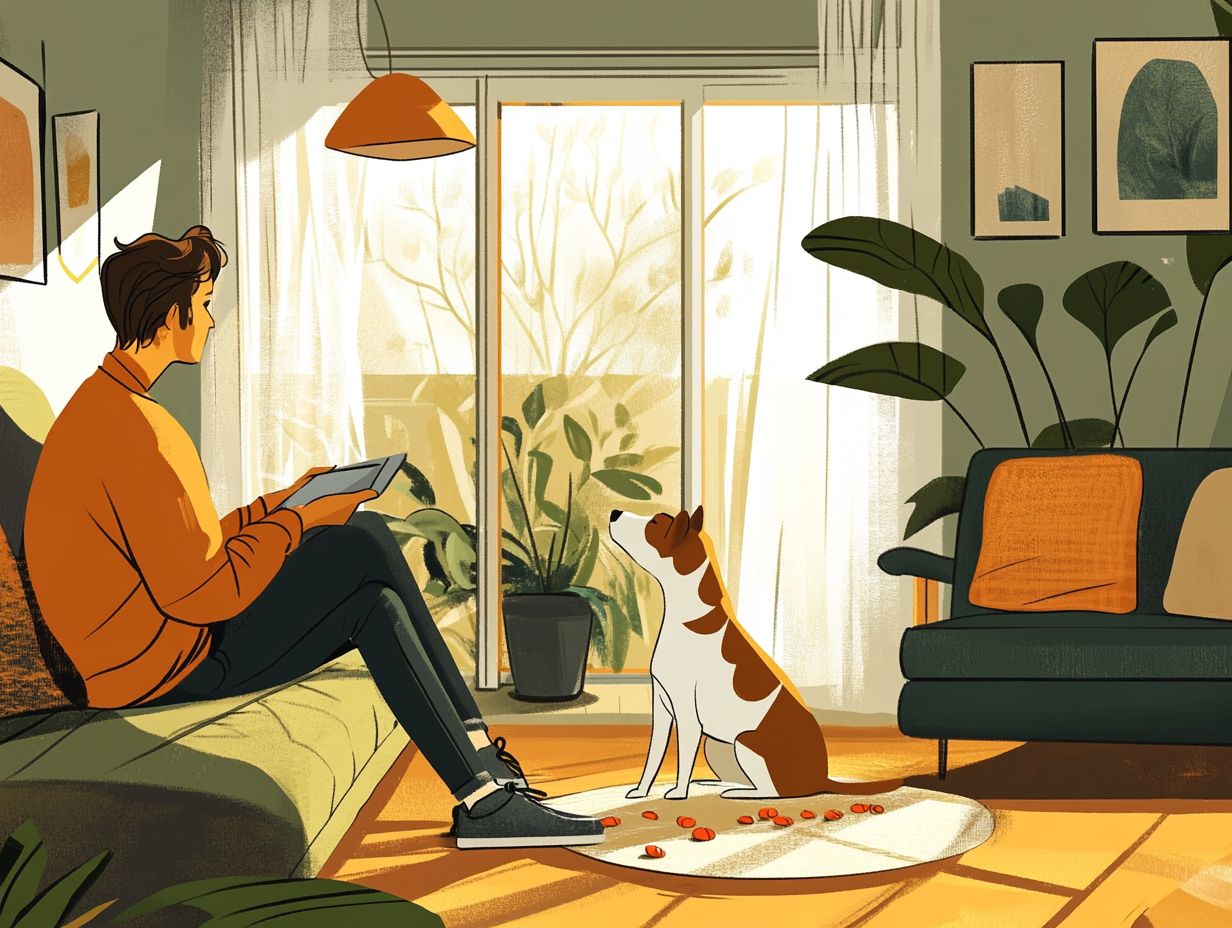
Consistency is key to creating a calm and positive environment for your pet. This includes setting clear rules and boundaries, using positive reinforcement techniques, and providing plenty of mental and physical stimulation. Additionally, learning how to use calming products for anxious pets can further help in reducing their stress levels.
What are some effective methods for training a pet for a calmer home?
Some effective methods for training a pet for a calmer home include using rewards and positive reinforcement, practicing calming exercises, and setting a routine for your pet’s daily activities. Additionally, consider these tips for training anxious pets at home and incorporate interactive games and enriching toys to keep them engaged.
What if my pet is already displaying disruptive behavior?
If your pet is already displaying disruptive behavior, you can start training today it’s never too late to make a change! Work with a professional trainer or behaviorist to identify the root cause of the behavior and develop a training plan focusing on behavior modification and anxiety management.
How long does it take to train a pet for a calmer home?
The amount of time it takes to train a pet for a calmer home can vary depending on the individual pet and their behavior. For effective strategies, consider exploring how to use training for a less anxious home. Consistency and patience are key, and it may take several weeks or even months to see significant improvements.
What should I do if I am having trouble training my pet for a calmer home?
If you are having trouble training your pet for a calmer home, don’t hesitate to seek help from a professional trainer or behaviorist, like those associated with Wittenberg University or Fenzi Dog Sports Academy. They can provide techniques to calm anxious pets before training and offer personalized guidance and support to help you and your pet achieve a calmer home environment.

